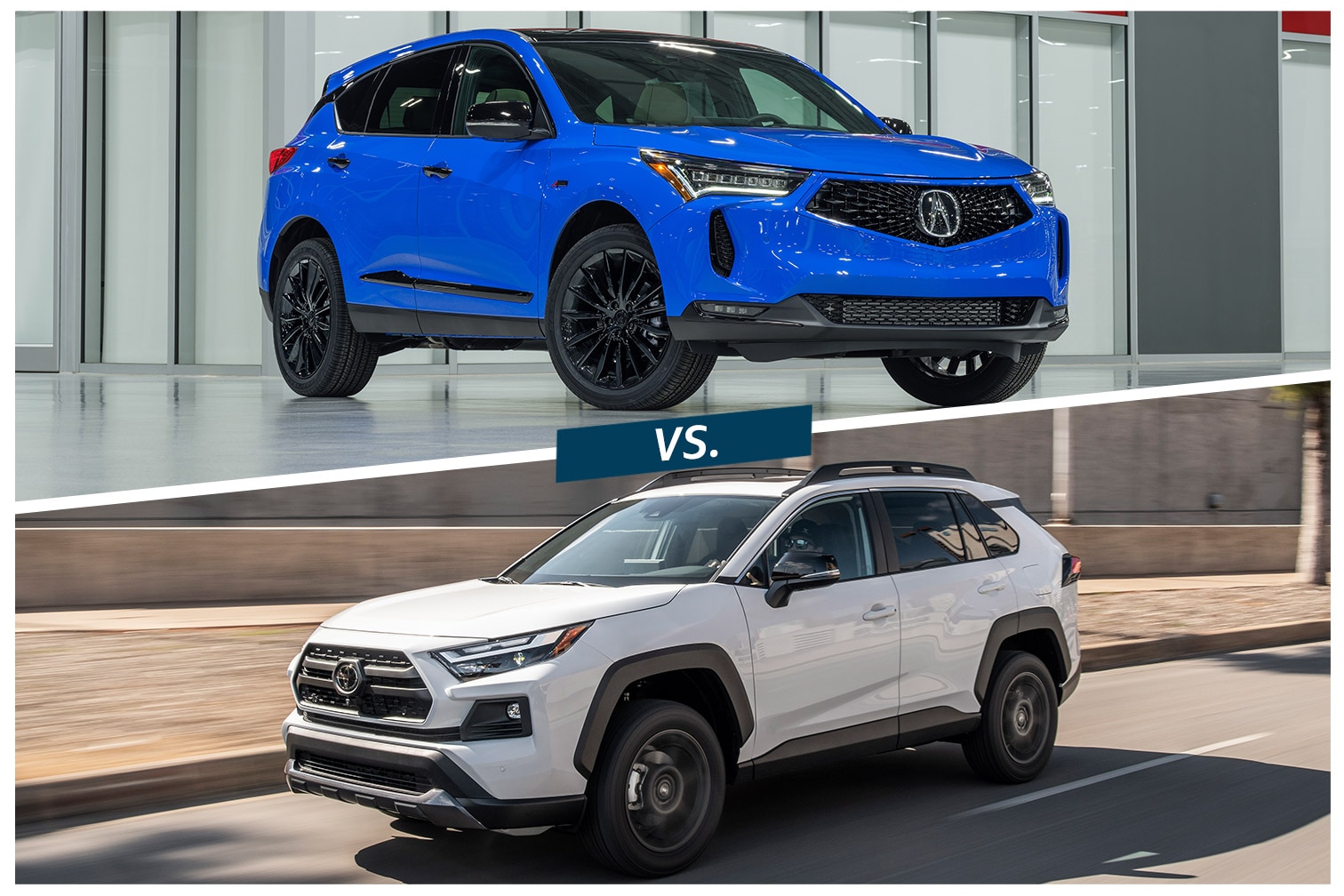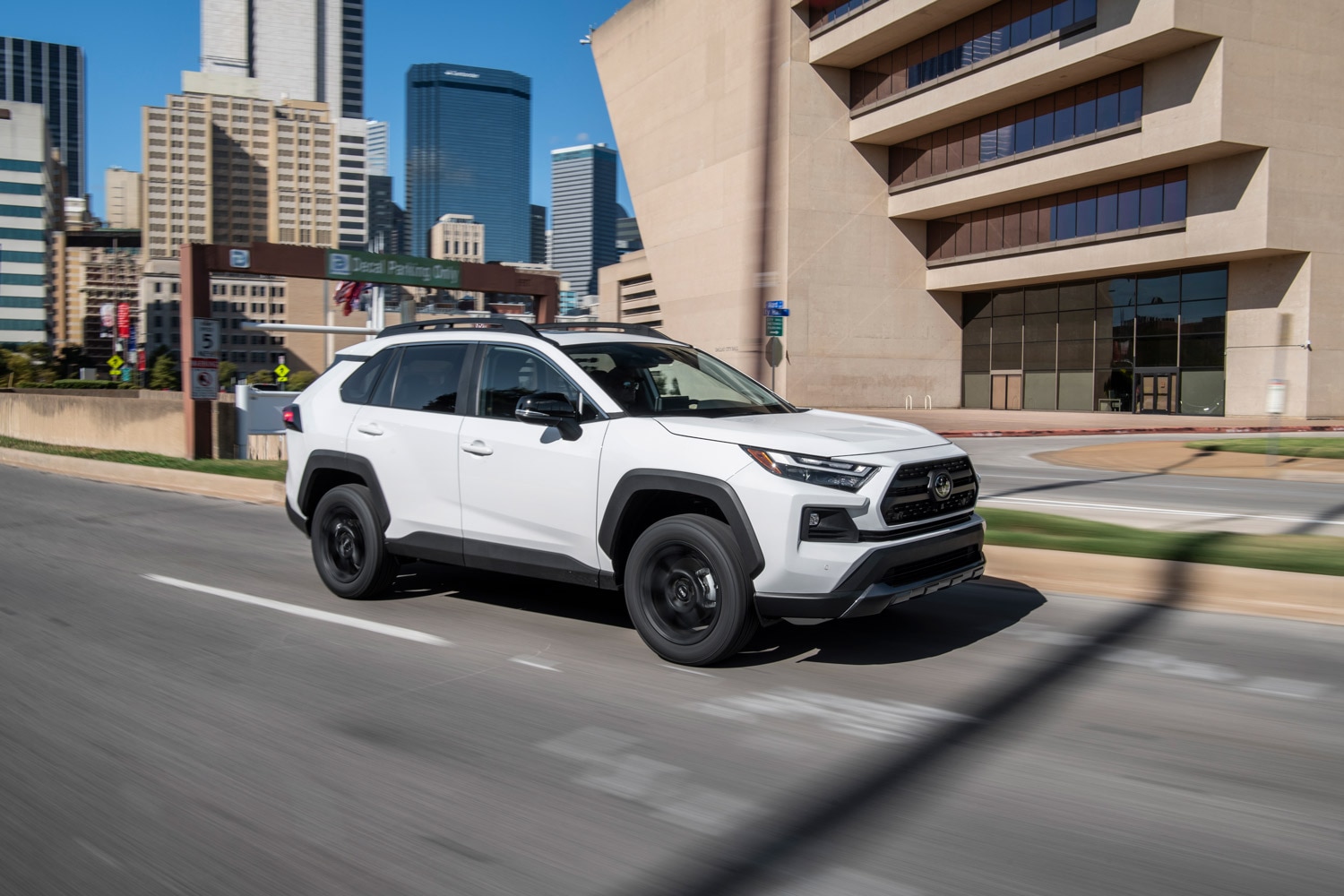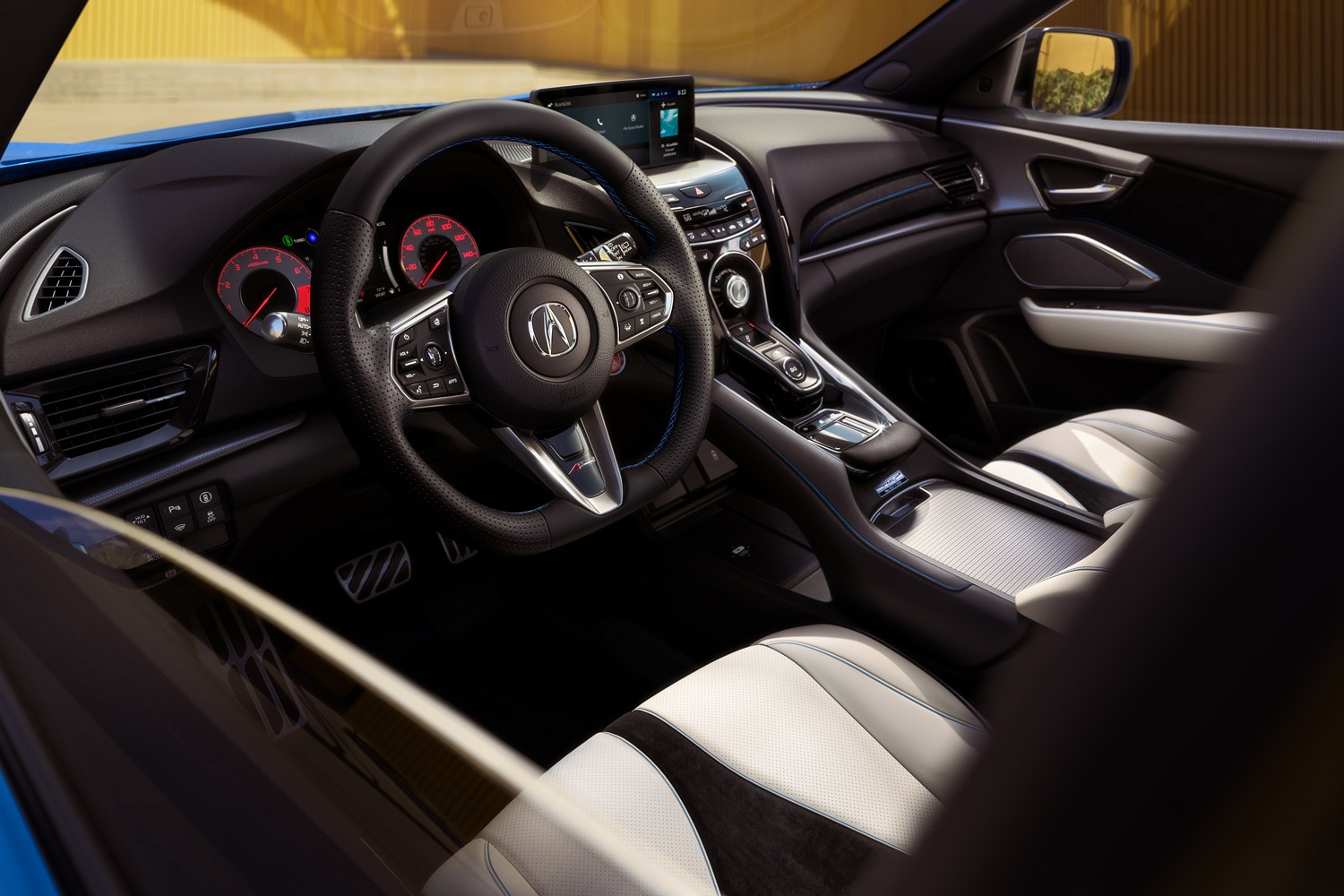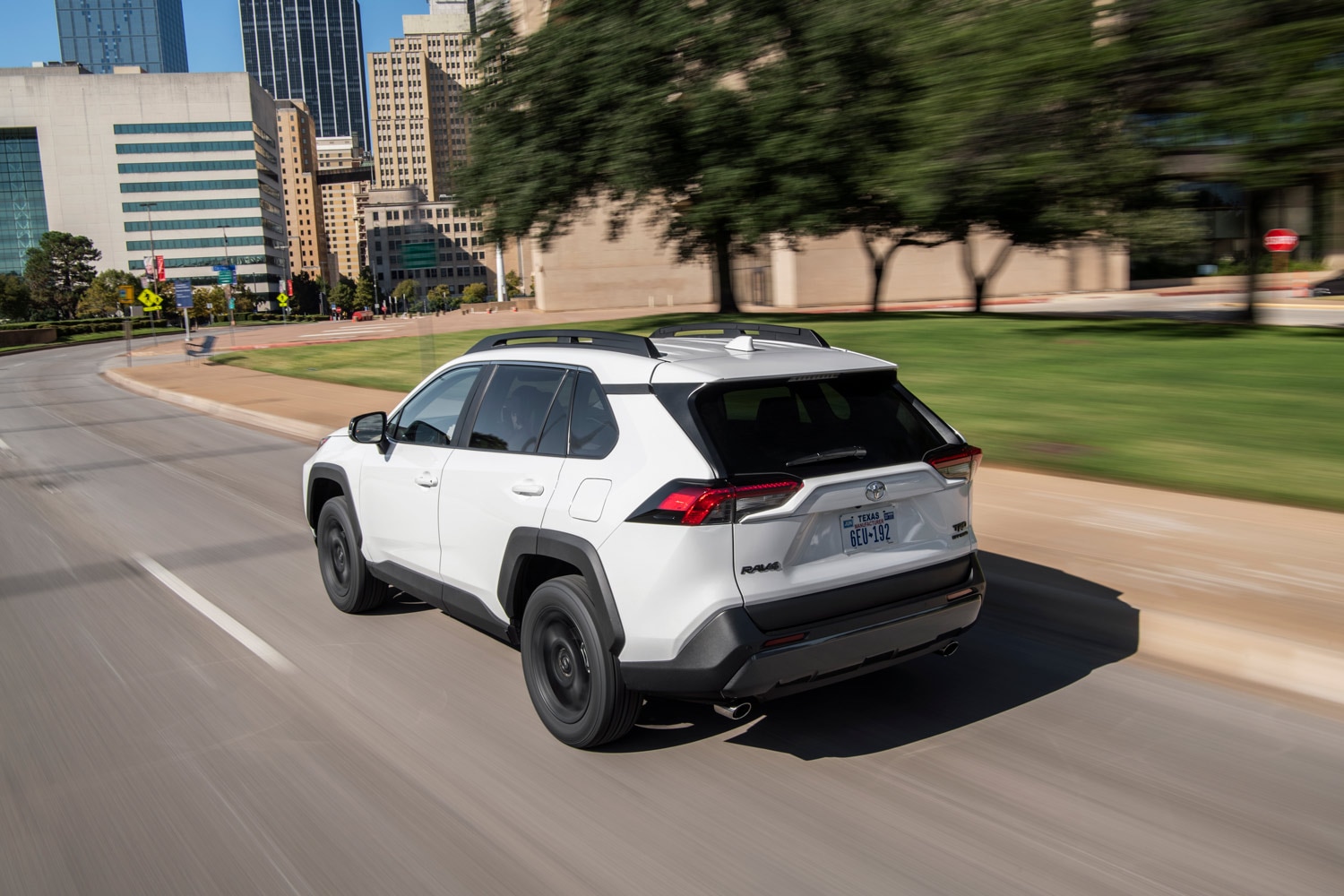Compared: 2022 Acura RDX vs. 2022 Toyota RAV4
Whether you're looking for a mainstream value or a luxury vibe, this pair of compact crossovers delivers distinctive differences.
 Acura | Toyota
Acura | Toyota
You can’t walk 5 feet in a Target parking lot without running into a compact crossover. It feels like everyone has one. Even if you don't, ending up in a crossover seems unavoidable: once you have that first baby or adopt that first dog—or get serious about your camping gear.
Many of those crossovers in our imaginary Target parking lot are Toyota RAV4s. Some are Acura RDXs, but not as many. With a crossover’s upright driving position and hatchback practicality, it’s easy to see why so many people choose them.
While automakers tend to offer similar features at similar price points in this segment, the 2022 Acura RDX and the 2022 Toyota RAV4 occupy different ends of the compact crossover class. That said, these SUVs can be respectively configured to have some price-overlap, which opens some opportunity for cross-shopping even for dissimilar SUVs like these that really only have size in common. Ultimately, from price to fuel economy to interiors, these two crossovers offer a choice between mainstream functionality and a more premium experience. If you happen to be cross-shopping the RAV4 and RDX, here’s how these two compact crossover SUVs stack up.
 Acura
Acura
Acura RDX vs. Toyota RAV4: Price
Though there’s no overlap when it comes to pricing models for the non-hybrid versions of the RAV4 and the Acura, the most well-equipped versions of the RAV4 hybrid get close to—and even match—the entry-level pricing floor of the luxury crossover.
The Toyota starts around $28,000 for the sparsely-equipped, front-wheel-drive LE trim, which comes complete with Toyota’s standard safety suite, including adaptive cruise control. All-wheel drive is available, starting at about $30,000. RAV4 pricing climbs up to around $38,000 for the range-topping Limited AWD. The RAV4 Hybrid goes for just a few thousand more than non-hybrid models—between about $31,000 and $40,000. The plug-in hybrid RAV4 Prime, on the other hand, lands solidly in RDX territory with a starting price of about $42,000 to $45,000.
 Toyota
Toyota
The RDX from Honda’s luxury brand has a base price of just under $42,000 in FWD form and $44,000 with AWD. The Acura comes standard with niceties like a panoramic moonroof, something that’s only available as part of an options package in the two costliest RAV4 trims. RDX prices top out around $54,000 for the A-Spec Advance AWD trim, which is about $8,000 more than the well-equipped RAV4 Prime XSE.
 Acura
Acura
Acura RDX vs. Toyota RAV4: Interior
On the inside is where these two five-passenger compact crossovers are most similar, at least dimensionally. In execution, however, they are an ocean apart. The Acura has 104 cubic feet available for passengers to inhabit with another 29.5 cu-ft for cargo behind the rear seats. The Toyota is slightly more cramped for people (98.9 cu-ft), but has more room for cargo (about 37.5 cu-ft, or just 33.5 cu-ft if you have the plug-in hybrid).
 Toyota
Toyota
The RDX has a 10-inch touchscreen across the lineup, compared with the RAV4’s 7-inch unit in all but the Limited trim, which features a 9-inch screen. The Acura pampers its inhabitants with leatherette-trimmed upholstery and heated 12-way power front seats, comforts that aren’t available until reaching the upper ends of the RAV4 range—and even then, front seat adjustability maxes out at eight ways. The ocean of difference between these two manifests via overall interior quality and feel. The RAV4 is awash in cheap plastics, and the cabin is noisy at speed. The RDX cabin is wrapped in soft, premium materials and is one of the quietest interiors you can enjoy today.
 Acura
Acura
Acura RDX vs. Toyota RAV4: Fuel Economy
Once again, Acura and Toyota have different aims when it comes to performance and fuel economy.
The RDX boasts a 272-horsepower, 2.0L, turbocharged, four-cylinder gas engine, with EPA estimates of 22 mpg in the city, 28 on the highway, and 24 combined for FWD models (AWD sees those figures fall to 21/27/23 mpg). The performance-inspired A-Spec trim takes a 1-mpg hit on the highway, to boot.
 Toyota
Toyota
The non-hybrid RAV4’s powertrain is nothing to get excited about, but it sure is practical. Its 2.5L, naturally aspirated four-cylinder only produces 203 horsepower, but it makes up for it with vastly superior fuel economy. Numbers vary by trim level, but FWD offerings achieve 27 mpg city, 35 highway, and 30 combined. Expect to lose 1 mpg on the highway and combined when opting for AWD (the thirstiest RAV4 is the off-road-oriented TRD trim, rated at 25/32/28 mpg.)
When you opt for one of the RAV4’s hybrid powertrains you get superior fuel efficiency, with an EPA estimated 41 mpg city, 38 highway, and 40 mpg combined in the Hybrid, which comes standard with AWD. The Prime (a plug-in hybrid) has an all-electric range of 41 miles, which is good for 94 MPGe according to the EPA, but just 38 mpg combined when the charge is depleted.
Written by humans.
Edited by humans.
 Austin Lindberg
Austin LindbergAustin Lindberg has spent the past 15 years working in journalism as a reporter and an editor covering the automotive industry, motorsports, and soccer for publications in the U.S. and the U.K. He is an EV owner with a keen interest in electrification and green tech.
Related articles
View more related articles